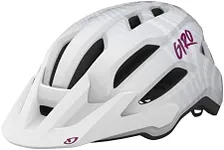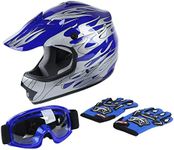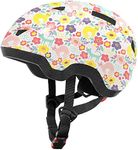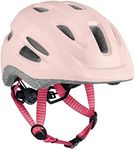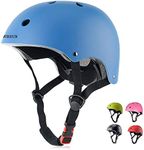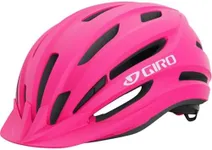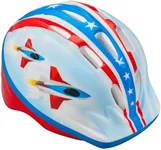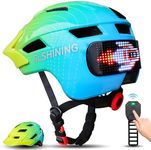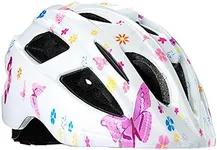Buying Guide for the Best Kids Bike Helmets
Choosing the right kids' bike helmet is crucial for ensuring your child's safety while riding. A well-fitted helmet can protect against head injuries in case of falls or accidents. When selecting a helmet, consider the following key specifications to make an informed decision that best suits your child's needs.Fit and SizeFit and size are the most important factors when choosing a kids' bike helmet. A helmet that fits well will stay in place and provide the best protection. Helmets come in various sizes, usually measured by head circumference. To find the right size, measure your child's head just above the eyebrows and use the helmet sizing chart provided by the manufacturer. A properly fitting helmet should be snug but not too tight, and it should sit level on the head, covering the forehead without tilting back. Adjustable straps and dial-fit systems can help achieve a better fit.
Safety StandardsSafety standards ensure that the helmet meets certain criteria for impact protection. Look for helmets that comply with recognized safety standards such as CPSC (Consumer Product Safety Commission) in the United States, CE (Conformité Européenne) in Europe, or AS/NZS (Australian/New Zealand Standard). These certifications indicate that the helmet has been tested and meets the required safety guidelines. Always choose a helmet with one of these certifications to ensure your child's safety.
VentilationVentilation refers to the number and size of vents in the helmet, which help keep the rider's head cool. Good ventilation is important, especially for active kids who may get hot and sweaty while riding. Helmets with more vents or larger vents provide better airflow, which can make wearing the helmet more comfortable. If your child tends to get hot easily, look for a helmet with ample ventilation.
WeightThe weight of the helmet can affect comfort, especially for younger children. A lighter helmet is generally more comfortable and less tiring to wear for extended periods. Helmets made from materials like in-mold polycarbonate are typically lighter. When choosing a helmet, consider your child's age and strength; younger or smaller children may benefit from a lighter helmet to avoid neck strain.
AdjustabilityAdjustability features, such as adjustable straps, dial-fit systems, and removable padding, help ensure a secure and comfortable fit. These features allow the helmet to grow with your child and provide a customized fit. Helmets with good adjustability can accommodate changes in head size and shape, making them a more versatile and long-lasting option. Look for helmets with easy-to-use adjustment mechanisms that your child can manage independently.
VisibilityVisibility features, such as bright colors, reflective elements, and integrated lights, can enhance your child's safety by making them more visible to others, especially in low-light conditions. Brightly colored helmets are easier to spot, while reflective elements and lights can increase visibility during dawn, dusk, or nighttime rides. If your child often rides in low-light conditions, consider a helmet with these added visibility features.
ComfortComfort is key to ensuring that your child will wear the helmet consistently. Look for helmets with soft, moisture-wicking padding that can be removed and washed. A comfortable helmet will be more likely to stay on your child's head during rides. Consider trying on several helmets to find the one that your child finds most comfortable, as this will encourage regular use.
